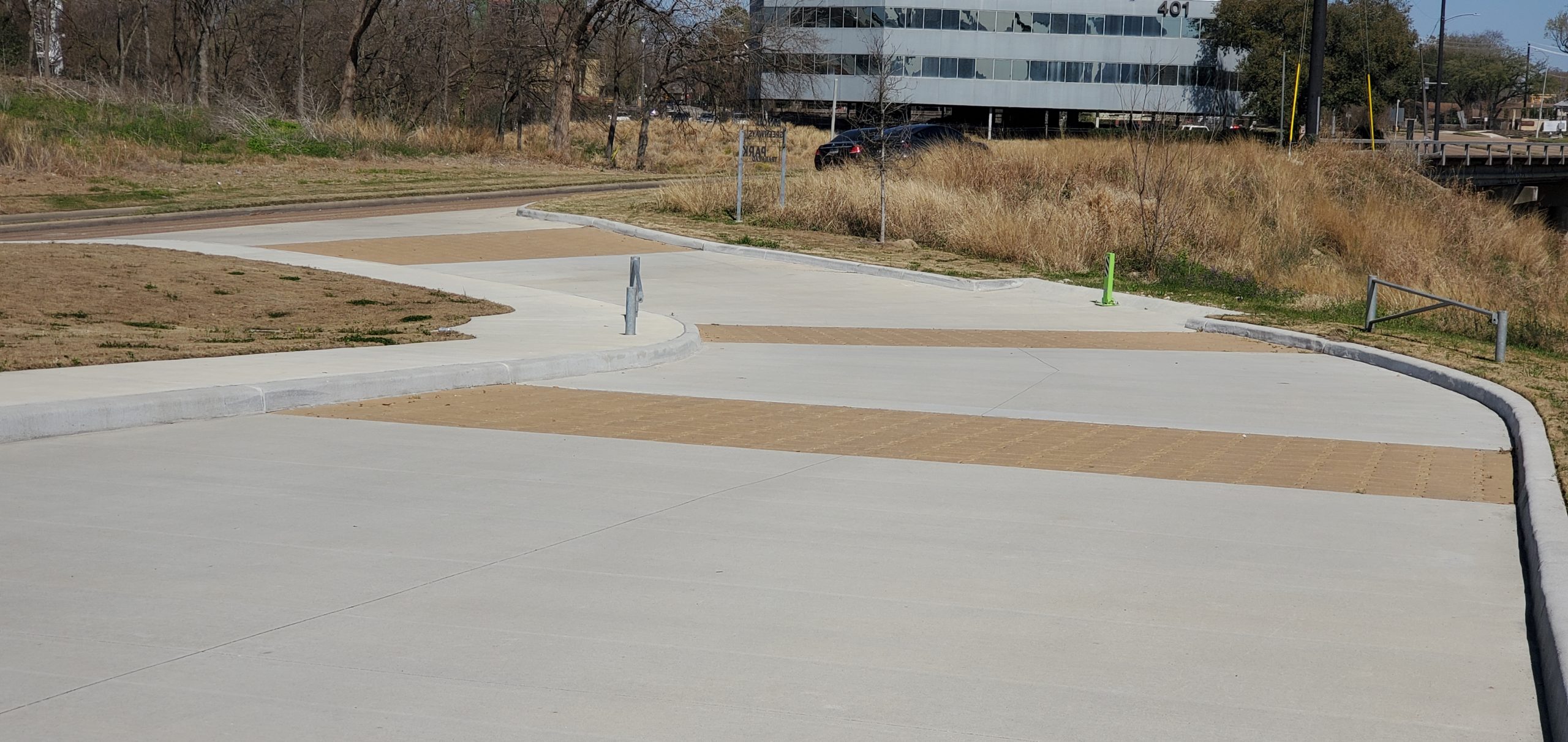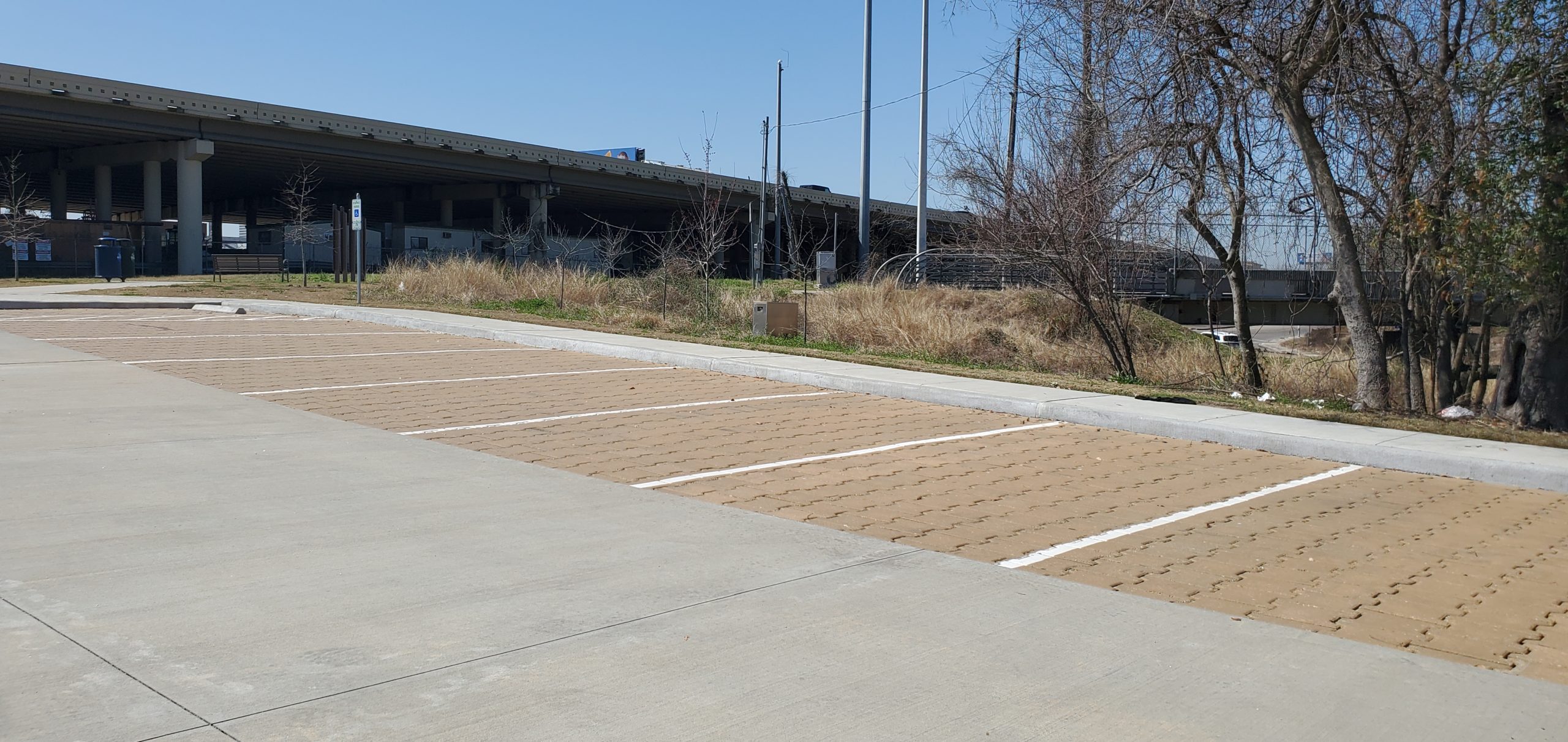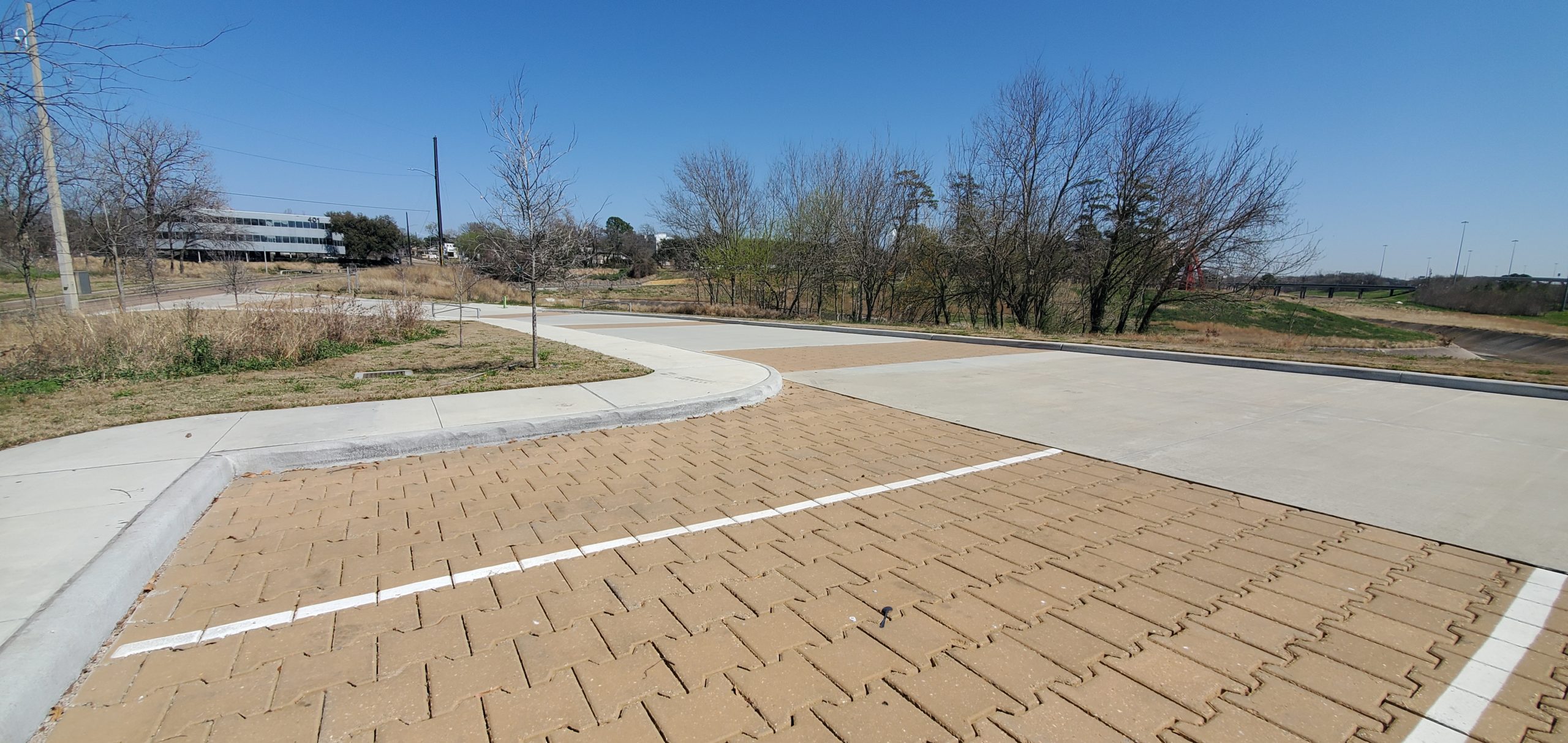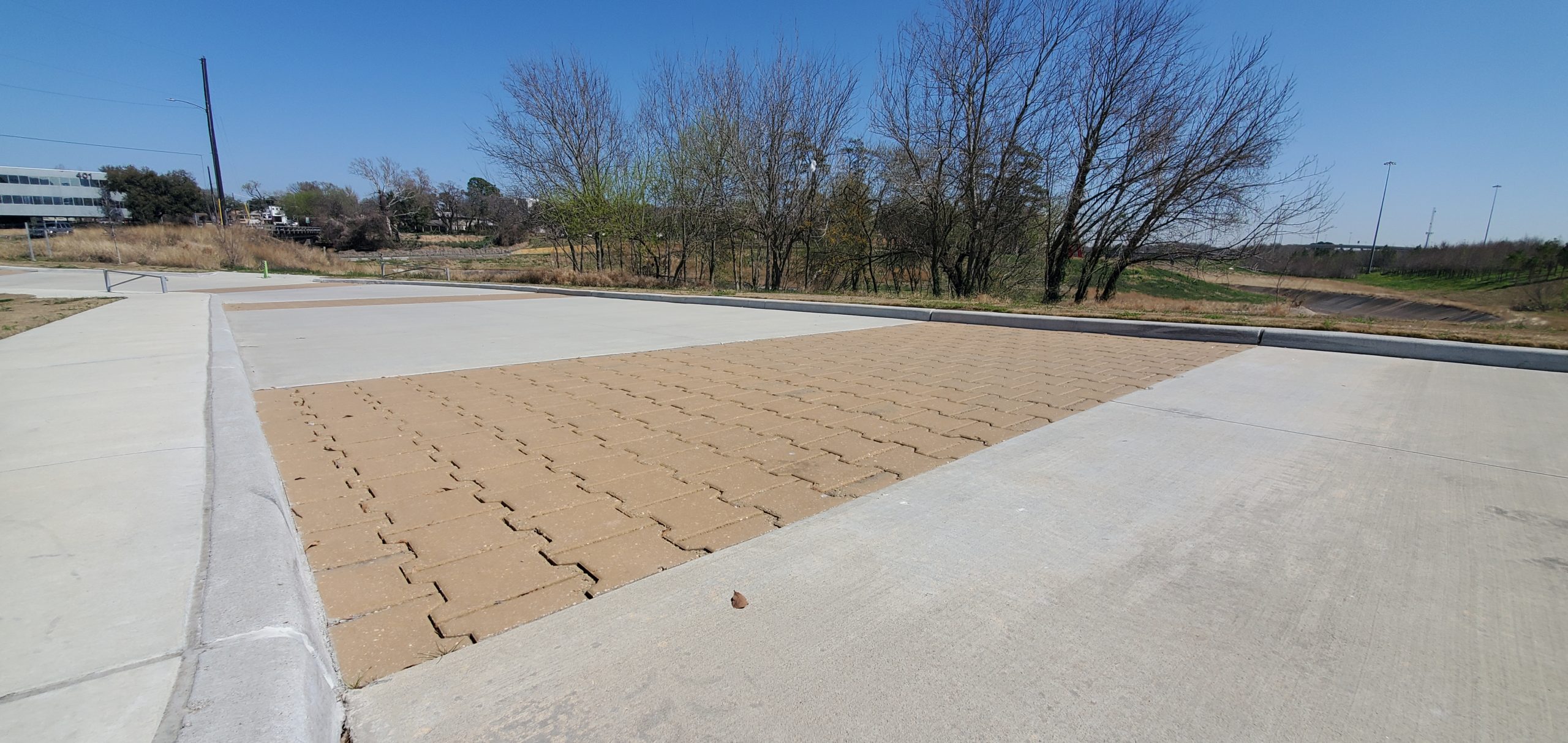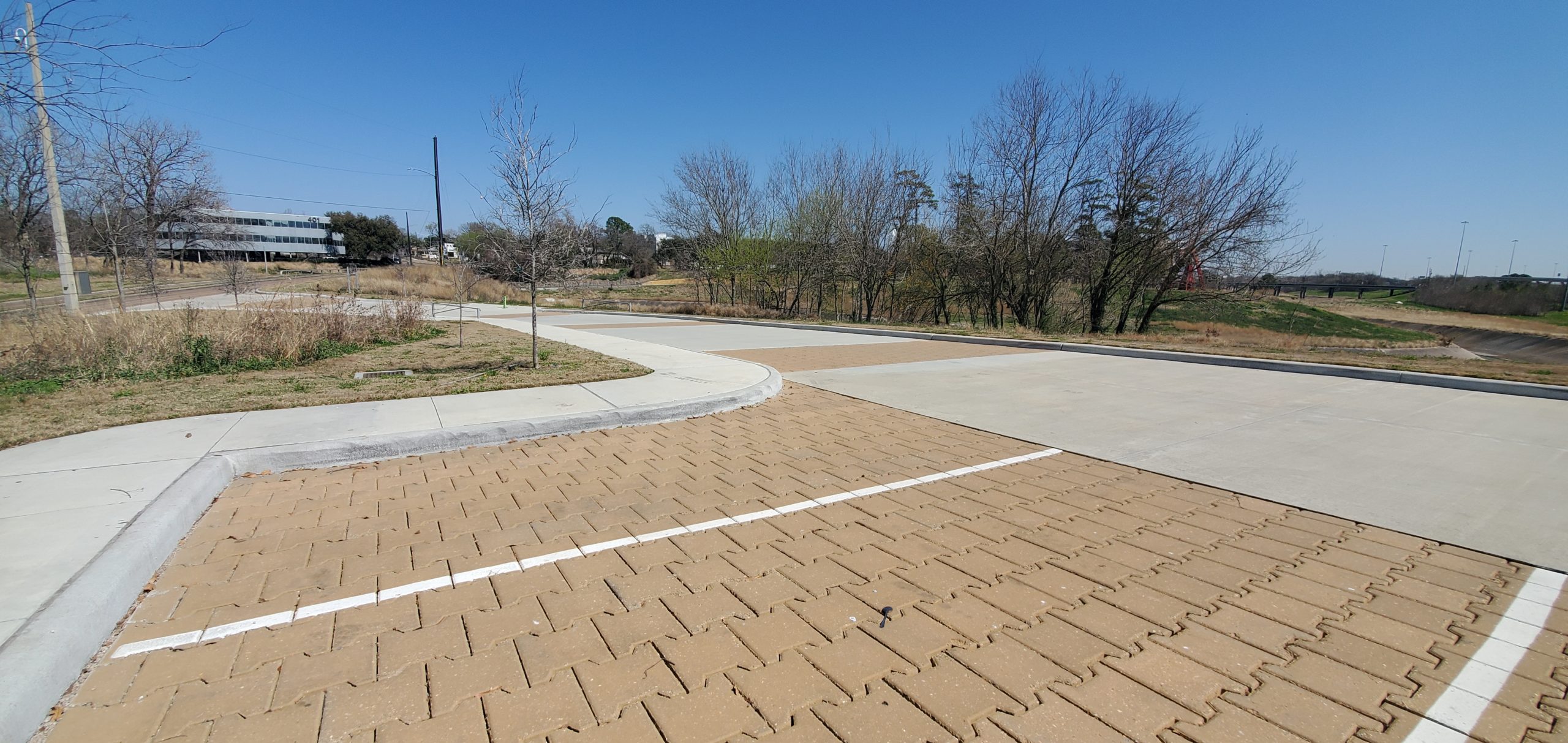
Low Impact Stormwater Solution: Houston Parks Board
Solving Difficult Drainage Issues While Enhancing the Existing Built Environment
SUMMARY:
Houston Parks Board and its project partners are transforming bayous into Greenways, carrying out an ambitious plan to create 150 miles of interconnected trails that will enable people to better explore and enjoy the city’s beautiful bayou landscape. That continuous ribbon of green extends all the way to a parking lot at the Bayou Greenways Park Trailhead, located on Studemont Street off I-10. While the lot doesn’t take up a lot of space, it has provided a great opportunity for Houston to flex its green muscles by utilizing innovative stormwater management solutions. Specifically, in the Fall of 2020, Construction EcoServices installed open join permeable pavers, which can reduce flooding, combat the costs of aging grey infrastructure, and help improve the overall quality of our waterways.
PROJECT GOALS:
If you have traveled to Houston, you have probably seen a detention pond on a commercial property off Beltway 8 or the I-10. These ponds are designed to minimize the impact of flooding by detaining a pre-determined volume of stormwater runoff. The trailhead parking lot doesn’t create as much runoff as a commercial development, but that doesn’t mean that an integrated detention system wouldn’t be helpful. It just meant that the design team needed to get creative.
SOLUTION:
Green Infrastructure was thread into the parking lot design by using PowerBlock permeable pavers in the parking stalls and drive aisle. Permeable pavers are one of the many solutions in the green infrastructure toolkit. They reduce runoff by allowing water to infiltrate into a stone reservoir below the pavers. This changes the path stormwater takes compared to an impervious surface. The new path takes the water longer to reach the outfall pipe that connects to the storm drain below. This longer path, combined with the reservoir capacity of the stone subgrade, mimics the function of a detention pond.
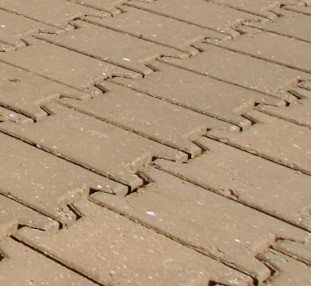 The design team decided to specify PowerBlock as the preferred choice of paver. One key feature of this paver that distinguishes it from others is the existence of open spaces between the paver joints. Typically, aggregate is used in the joints to interlock each paver together. PowerBlock pavers have clear open joints because they are articulated, which allow them to interlock together without aggregate. This increases the infiltration rate of the system and provides more space for sediment and debris to accumulate (which can be removed with proper maintenance). The blocks are installed on a bed of crushed limestone, which sits on a woven geotextile fabric. The limestone provides a structural subgrade for the permeable pavers, and the open voids between the aggregate allow stormwater to be temporarily detained.
The design team decided to specify PowerBlock as the preferred choice of paver. One key feature of this paver that distinguishes it from others is the existence of open spaces between the paver joints. Typically, aggregate is used in the joints to interlock each paver together. PowerBlock pavers have clear open joints because they are articulated, which allow them to interlock together without aggregate. This increases the infiltration rate of the system and provides more space for sediment and debris to accumulate (which can be removed with proper maintenance). The blocks are installed on a bed of crushed limestone, which sits on a woven geotextile fabric. The limestone provides a structural subgrade for the permeable pavers, and the open voids between the aggregate allow stormwater to be temporarily detained.
A high infiltration rate provides designers with the ability to use PowerBlock as a drainage inlet or, in this case, a trench drain. The permeable pavers on this project are in alternating sections of the drive aisle, with concrete spanning between each section. As stormwater flows down the drive aisle to the street, it drains into the open joints through the voids of the aggregate before finally reaching the perforated underdrain. If you were to model the stormwater runoff on this project, it would look more like an undeveloped tract of land that doesn’t have impervious surfaces than a paved parking lot.
OUTCOME:
Low impact development and green infrastructure solve difficult drainage issues, as this project has demonstrated. More importantly, it can be combined with gray infrastructure to enhance the existing built environment. Stormwater management in the greater Houston area is continually changing, and permeable pavement along with innovative green infrastructure solutions will be leading the charge.



